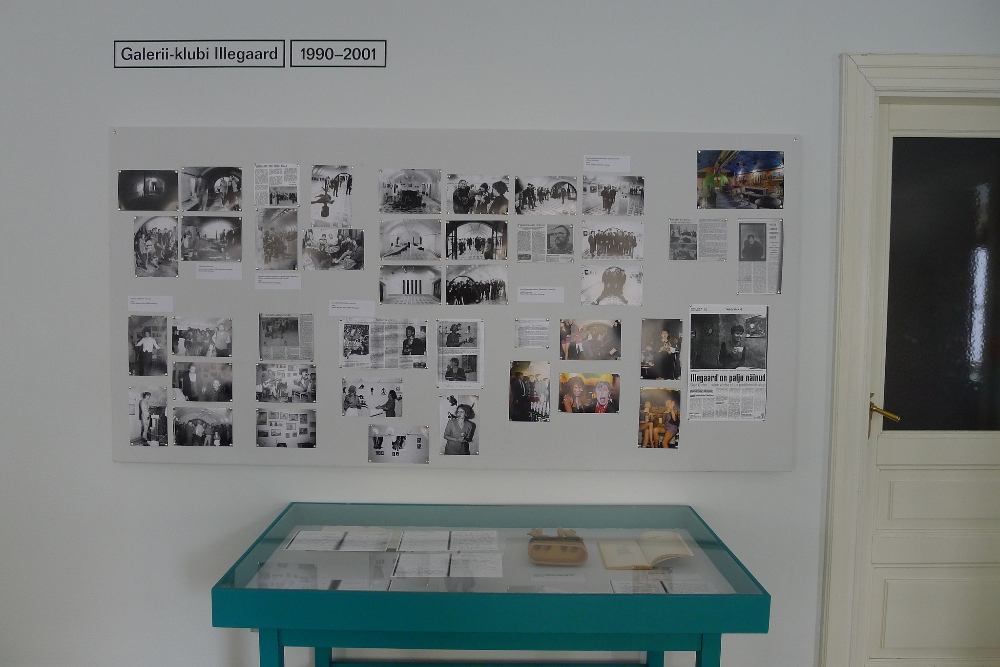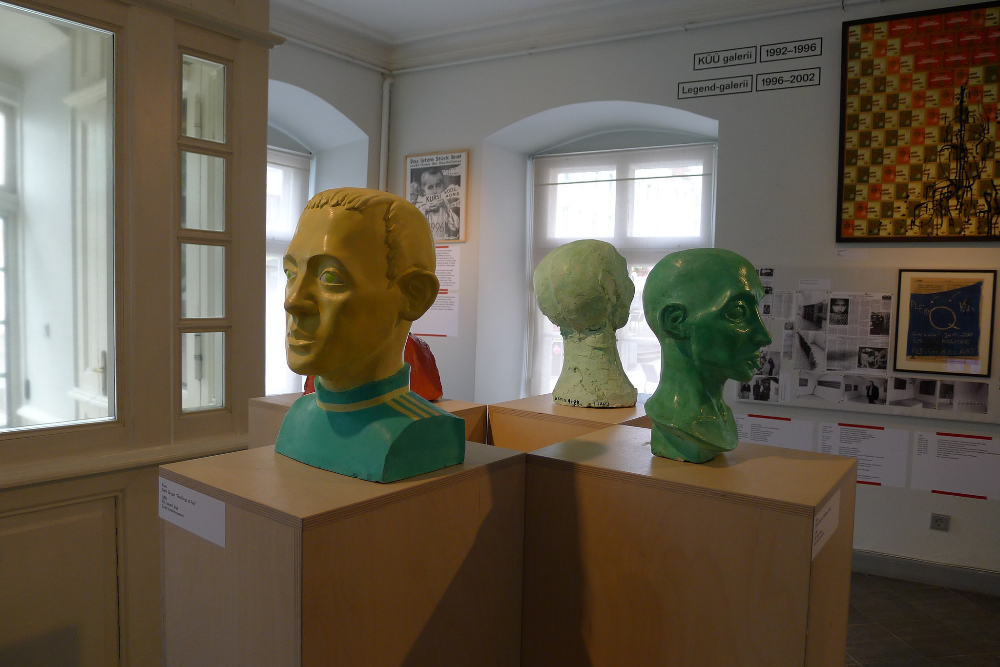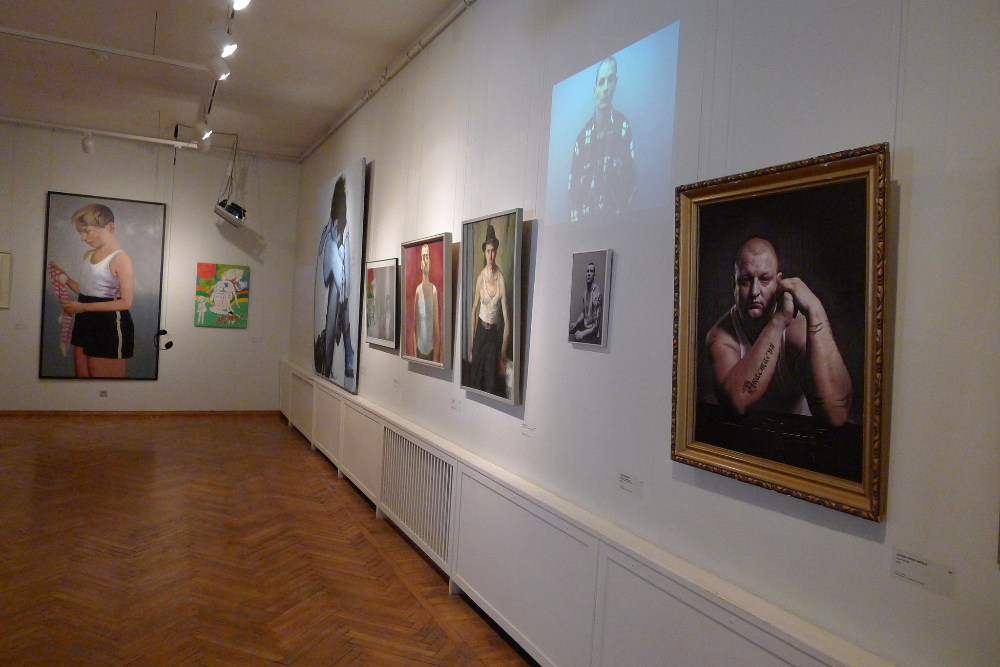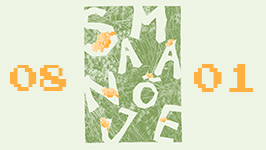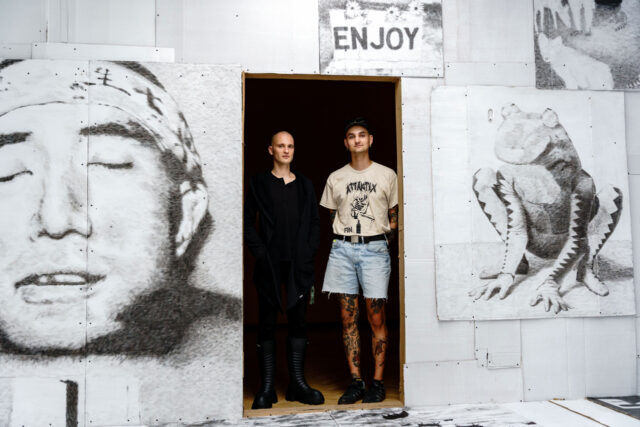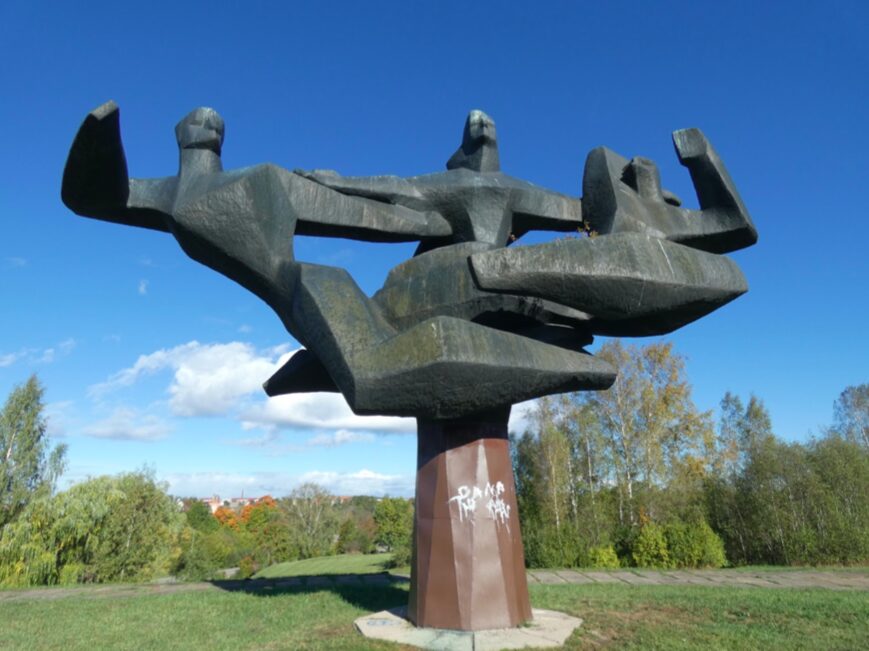
Streets of Tartu
Challenging the status quo of art and its many institutions seems to be something built into the mechanisms of the art world. But change can often be painful, something which is rather apparent at the Tartu Kunstimuuseum. The institution has been around since 1938 and is located in a local version of the leaning tower of Pisa. It has been at the center of a storm caused by the ministry’s appointment of Rael Artel as director since 2013. After a petition against Artel’s leadership, there was recently an official inquest into the running of the museum, which unveiled decades of mismanagement. Artel has a strong curatorial background and is known for her discursive exhibitions that experiment and challenge the way art is shown and for what reasons. One such project took place at the Tartu Kunstimuuseum earlier this year, appropriately titled «Is this the museum we wanted?»((Gregor Taul’s review of the exhibition “Losing the battle but winning the war?“)) The exhibition placed the institution itself on display, rather than the works of art, and it is this type of questioning Artel is known for in her independent project.((For Artel’s stance on museum exhibitions, you can read the interview “Exhibitions in museums could very well be something we have not imagined yet.” in Kunst.ee 2014/1)) The appointment is quite daring, but the full aftermath of such a hire remains to be seen. The second largest city in Estonia is quite small, so on a recent visit I was curious to see what all the fuss was about.
The building itself is a curiosity as it leans over and stands as a singular slice in the town square, and I see groups of tourists outside the building, taking photos of the diagonal museum. They do not enter the museum, but continue their tour of this old university city. Inside the museum I am greeted by a colorful bookstore, and I am not sure if I am in Tartu anymore. The bookstore looks like something I would find in a bigger and more progressive town. The store has a small selection of Estonian art books and the catalogs of the museum. Most of the Estonian books are published and distributed by Lugemik, who also have a great store in Tallinn, next to the EKKM, the contemporary art museum. The change in programming at the museum in Tartu is apparent already in the bookstore. The tired and conservative catalogs of yesteryear are in stark contrast to the publications the institution has put out since the start of Artel’s tenure. As a bonafide nerd it warms my heart and I pick out books for €80, including the required tote bag, reading PRAVDA in the Prada font.
So far so good.
“Kampsunid ja Kostabid. Tartu Nãitusepaigad 1988-2014” (“Jumpers((Jumpers, also known as Tartu jumpers is a subcultural term for intellectual bohemians characteristical for Taru as the university city. The same word also refferes to Tartu as a little wooden city.)) and Kostabis((Kostabi refers to Kalev Mark Kostabi, an Estonian born American artist, who became famous with the postmodern flow of the 1980’s for setting up a factory to produce his paintings. In 1990’s the Estonian national culture field tried to establish connections with many emigre figures, among which Kostabi, who was a rather ambivalent example of international success. Some active culture people formed a group titled Kostabi (founded in 1989) who published a newspaper of the same title (1991-1993).)). Exhibition spaces in Tartu 1988-2014 ”) is the exhibition on the ground floor and deals with Tartu’s very recent history and the contemporary art scene in the city. A selection of galleries and artist run spaces are documented, from the excessive 80s and the Kostabi gallery to the curatorial experiments of the Rael Artel gallery, which closed down in 2009 after running for three years. The show is part of an exhibition series that takes a closer look at the local, and later shows will include a similar look at the street art scene among other things. The local, and the recent, is often shunned by historical museums, but curator Triin Tulgiste and director Artel’s vision has been to take the local seriously, and not affirm the state of things as they have been presented over the last decades, but to provide a new perspective on recent events. There is little art to be seen in this exhibition and the emphasis is on the different spaces and the documentation and reception of these. The photocopied reviews and newspaper mentions that dominate the spaces on the ground floor start to take on a life of their own throughout the exhibition, starting out as signifiers of archival information and turning into wallpaper and decoration at the end. To me, as a foreigner with no knowledge of the Estonian language, this is curatorial gesture that works on some level, but I can understand my guide’s frustration with the disavowal of the archive. This type of exhibition, examining the recent past and the structures that influence the art scene outside of the production and display of the art work itself, is missing in most museums, and it’s something that should be a necessity in order to collect the recent past and understand the current state of the art world, whether locally or internationally.
The two other exhibitions in the museum, each on its own floor, deal with the collection of the institution, and are curated by artists Flo Kasearu and Rauno Thomas Moss. Kasearu has focused on the white tank top as a lowest common denominator for her selection of works and has picked up work where there is present. There are contemporary pieces where the mythology of the white tank is put on display and there are other pieces that deal with the building of the nation, so think strong, sweating men, in t-shirts and tank-tops, slaving away, painted by different techniques that might have been deemed in style at some point. The conceit is not a very strong curatorialy, but goes to show how you can tell a narrative of a nation through art in very surprising ways.
The selection made by Moss is slightly more in keeping with art historical categories. He has focused on nature and its relationship to mysterious and supernatural. The exhibition is packed with works and gives a telling narrative of the developments in Estonian art as the historical selection differs from my own national narrative quite significantly.
All in all, the museum under Artel’s directorshop has a lot of promise, at least seen from my perspective as a foreign visitor with some knowledge of the contemporary art scene in the western world. The changes might seem jarring to the employees of the museum and also to the citizens of Tartu, but I would rather have an innovative and dynamic institution than a stale piece of bread, so kudos to Artel and her work at the museum. Later on that same day I met up with some artists at an artist’s studio. Three of the artists were visiting from Tallinn, and they run an artist run space there. They told me they were running the only artist run space in Tallinn, and even though that might be true, it just made the exhibition I saw earlier that day even more pressing in order to pick up the pieces from the recent past, exhibit and contextualize, in order to move forward and see oneself in the light of history.
The fuss in this small city stems from the conflict between the new and the old, especially when it comes to the ideology of the museum. Artel’s curatorial activities are self-reflexive and it is rather apparent that the old museum did not see the point of looking at itself, its function or its recent history in public. Change is traumatic, but it provides for a more discursive museum that allows for several voices to be raised, whether other curators, artists or historians or a multivalent language for displaying art. The three exhibitions and the bookstore bode well for the future if Artel is set to ride the storm out.








